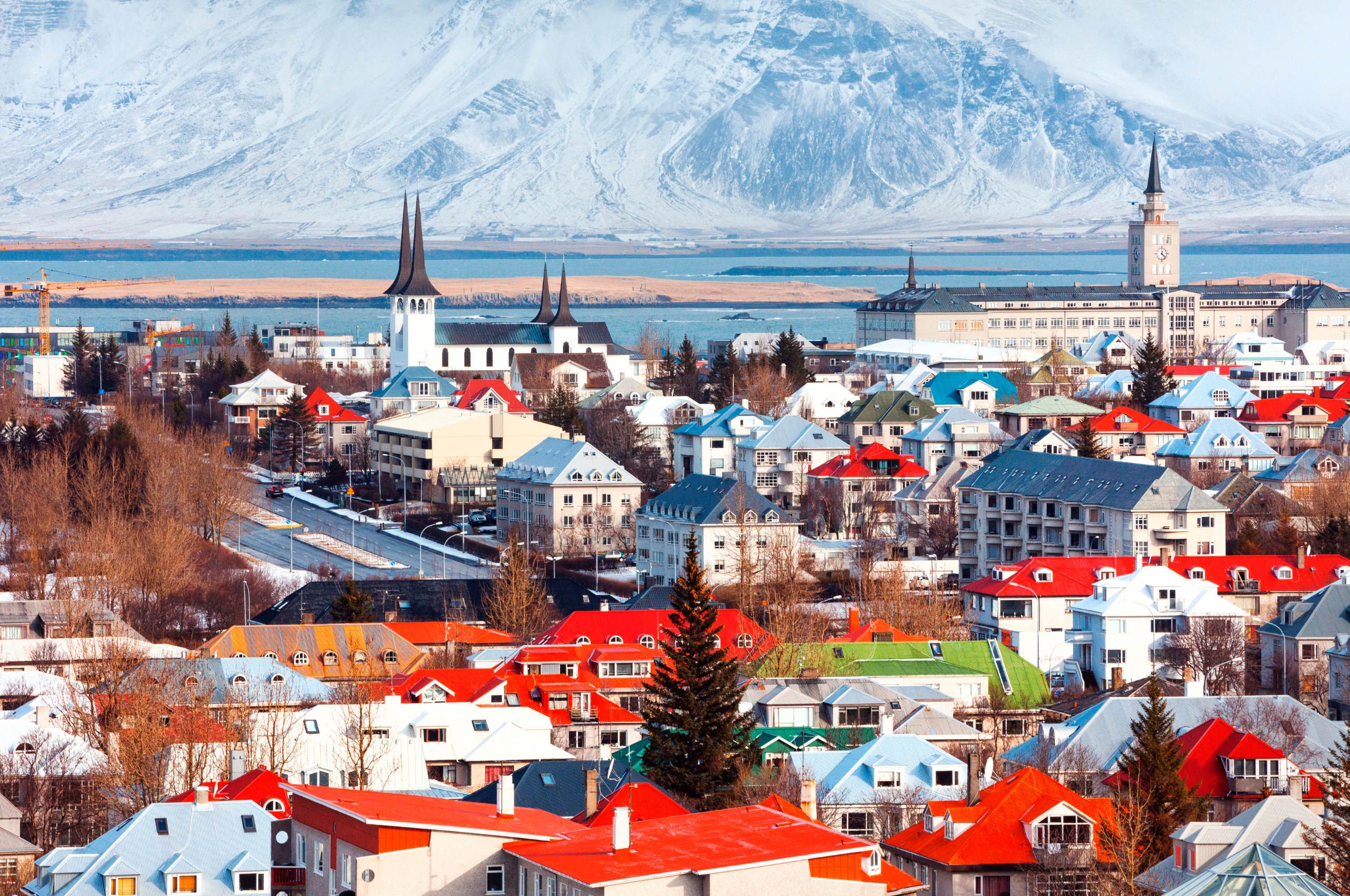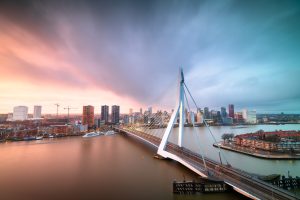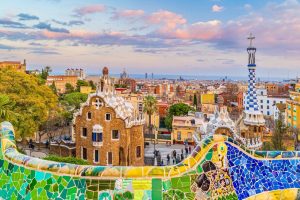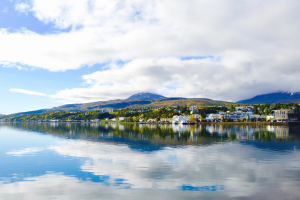Reykjavík, the northernmost capital city in the world, sparkles like a diamond on the edge of the Arctic Circle. Despite its manageable size, the Icelandic metropolis offers a wealth of culture, history, and natural wonders. Friendly locals, a vibrant nightlife, and proximity to spectacular landscapes make Reykjavík the perfect starting point for unforgettable Icelandic adventures. Let yourself be enchanted by the city’s iconic landmarks and charming neighborhoods and discover why Iceland is known for more than just its volcanoes and geysers.
Top Attractions in Reykjavik
Hallgrímskirkja
Hallgrímskirkja is Reykjavík’s most famous landmark and can be seen from afar. Its futuristic facade, reminiscent of basalt columns, was inspired by Iceland’s unique rock formations and symbolizes the close connection between nature and architecture. Inside the church, a minimalist yet bright atmosphere awaits, conveying a sense of peace and spaciousness. Those who take the stairs or elevator to the viewing platform are rewarded with a breathtaking view over the city and the surrounding landscape.
Fun Fact: Construction of Hallgrímskirkja took nearly 40 years (from 1945 to 1986)! The long wait was worth it—today the church ranks among Iceland’s most striking buildings.
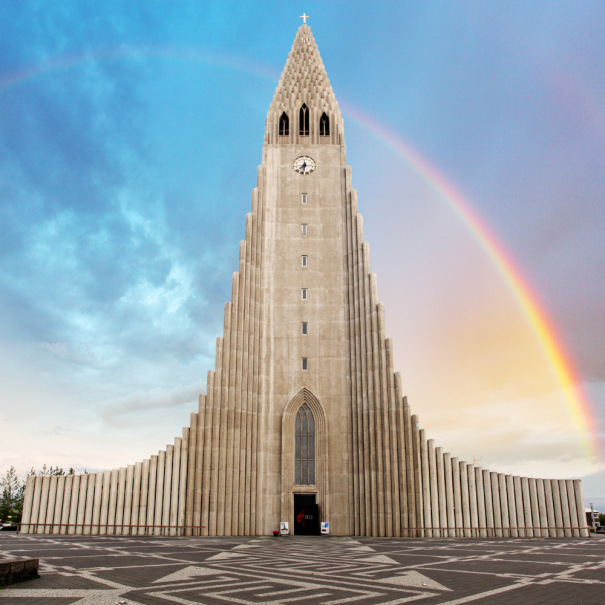
Harpa Concert Hall and Conference Centre
Located right on the harbor, Harpa captivates with its shimmering glass facade that reflects the light in colorful patterns. The modern building is a symbol of Iceland’s cultural creativity and is home to the Icelandic Symphony Orchestra and the Icelandic Opera. Concerts, festivals, and other events take place here throughout the year. Even without a concert ticket, it’s worth a visit just to admire the stunning architecture.
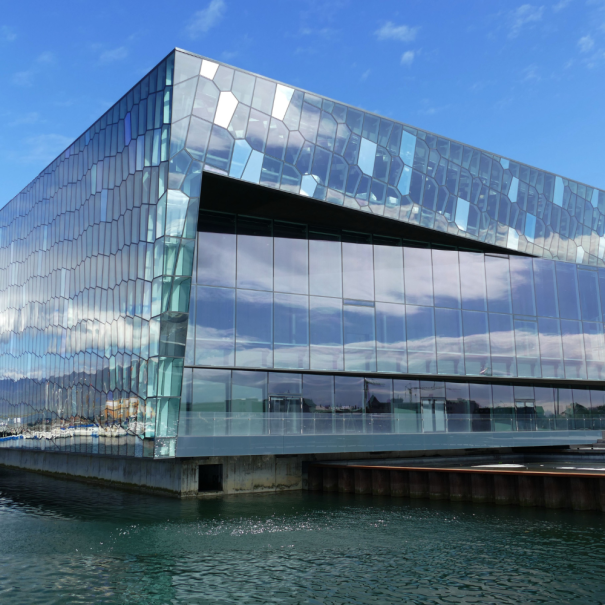
Sun Voyager (Sólfar)
The Sun Voyager is an iconic sculpture on the waterfront promenade, representing a stylized Viking ship. It symbolizes not only Iceland’s deep ties to ancient seafarers but also the longing for new horizons and adventures. The sculpture is especially magical at sunset when the sun casts a golden glow on the metal. Many visitors stop here for a photo before continuing their walk along the coast.
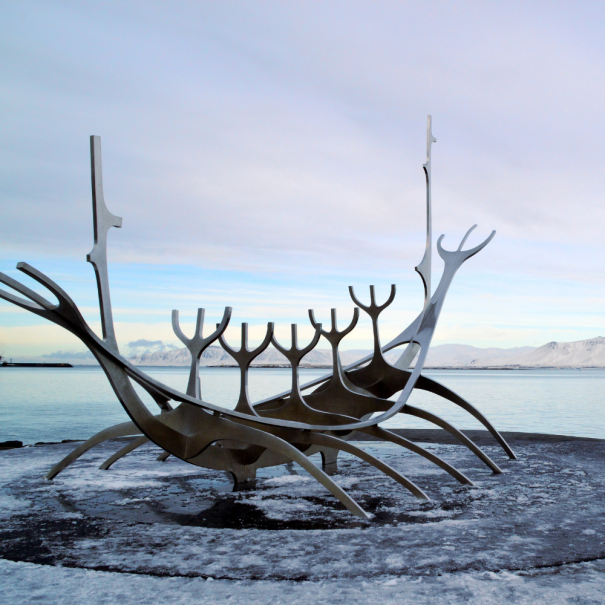
Best Scenic Viewpoints
Perlan
Perched high above Reykjavík on Öskjuhlíð Hill, Perlan was originally a hot water tank that supplied the city. Today it houses a museum, a café, and an impressive observation deck. The glass dome offers a panoramic view of Reykjavík and the surrounding mountains—on clear days you can see all the way to the Snæfellsjökull glacier. There’s also an artificial ice tunnel where you can learn more about Iceland’s glaciers.
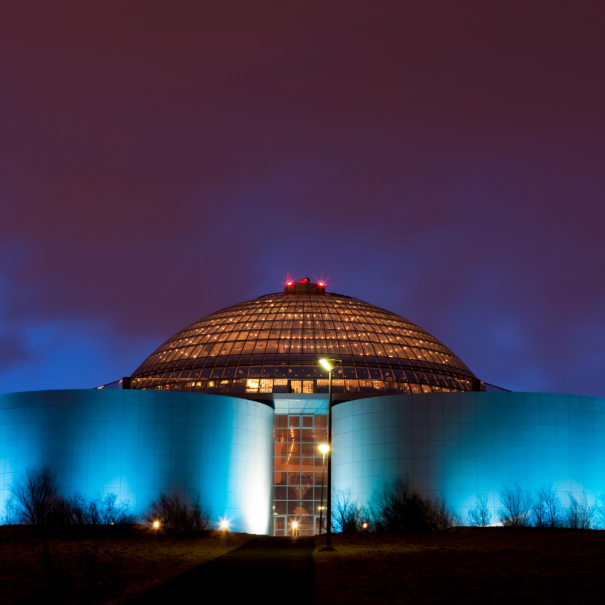
Hallgrímskirkja Tower
Yes, Hallgrímskirkja already made the top attractions list, but it also ranks among the best viewpoints in Reykjavík. From the top, you can see the city’s colorful rooftops, the harbor, and the blue-green sea. On clear days, distant glaciers sparkle and you can gaze out over the vast volcanic landscapes. Don’t forget your camera—this panoramic view is second to none.
Culinary Highlights for Food Lovers
Bæjarins Beztu Pylsur
Iceland and hot dogs? Absolutely! This small hot dog stand in the heart of Reykjavík is world-famous and has attracted celebrities like Bill Clinton. Here you’ll get an Icelandic hot dog made from lamb, pork, and beef, topped with onions, mustard, and remoulade. It’s an absolute must when in Reykjavík—and a cheap, tasty bite to eat.
Kaffivagninn
Kaffivagninn is Reykjavík’s oldest restaurant and is picturesquely located by the old harbor. Here you can enjoy traditional Icelandic dishes like fresh fish and seafood. The atmosphere is cozy and authentic—a perfect spot to warm up with a soup after a harbor stroll. The view of the colorful fishing boats completes the maritime experience.
Apotek Restaurant
For a more upscale culinary experience, Apotek Restaurant is the place to be. Located in a historic building in the city center, it combines traditional Icelandic ingredients with modern cooking techniques to create a feast for the senses. Creative cocktails and desserts are especially popular and round off the evening in style. Let yourself be charmed by the elegant atmosphere and experience Icelandic gastronomy at its finest.
Insider Tips & Hidden Gems
Grótta Lighthouse
At the western edge of Reykjavík lies the Seltjarnarnes peninsula with the idyllic Grótta lighthouse. During low tide, you can walk across a small dam to the island and view the lighthouse up close. From here, you’ll have a fantastic view of the Atlantic and, on clear nights, the chance to spot the Northern Lights. A peaceful place that invites reflection and shows just how close nature is to the city.
Nauthólsvík Geothermal Beach
A golden beach in Iceland? Yes, it exists! Located in the Öskjuhlíð district, Nauthólsvík Beach features seawater that’s geothermally heated. Even in cooler temperatures, you can enjoy a warm and relaxing swim. The combination of beach, sea, and crisp Icelandic air makes for an unforgettable experience.
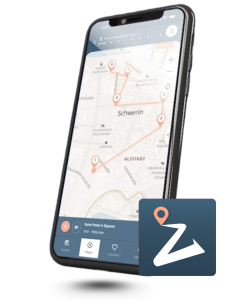
Discover 70+ cities worldwide with professional audio guides – and counting! Thanks to integrated navigation, you’ll easily find your way, even without an internet connection. Whether it’s famous highlights or hidden gems – Plazes brings exciting tours and vivid stories straight to your smartphone. Completely free and no registration required. Download now and get started!
Museums for Culture and History Enthusiasts
National Museum of Iceland (Þjóðminjasafn Íslands)
The National Museum offers a comprehensive look at Iceland’s history and culture—from the first settlers to modern times. The interactive exhibit offers exciting insights into Viking life, the development of the Icelandic language, and key historical events. Especially impressive is the large collection of medieval artworks and handcrafted items. A must for anyone who wants to understand Iceland’s past.
Saga Museum
The Saga Museum brings Iceland’s famous sagas vividly to life. Wax figures, sets, and sound effects recreate the stories of the Vikings in vivid detail. You can even dress up in authentic Viking costumes and snap some memorable photos. History comes alive here—great for both adults and children alike.
Photospots in Reykjavik
Rainbow Street (Skólavörðustígur)
The colorful Rainbow Street leads straight to Hallgrímskirkja and is the perfect spot for a vibrant photo. The painted street is a symbol of Reykjavík’s openness and tolerance and provides a joyful backdrop for snapshots. Especially when paired with the majestic church tower in the background, it makes for a striking image.
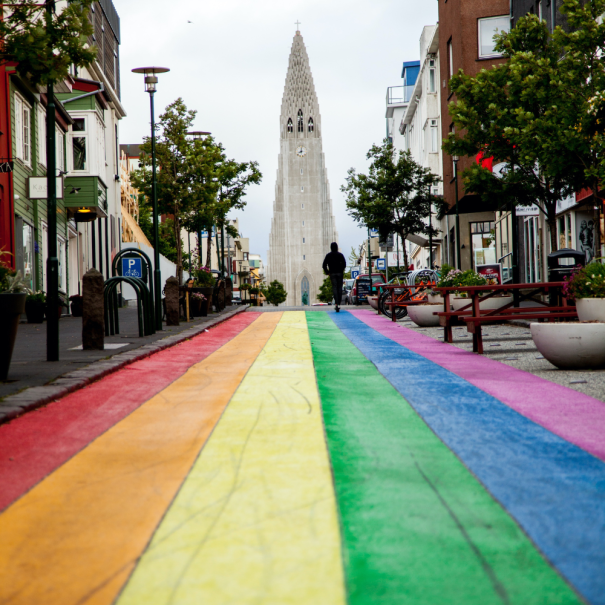
Harpa Facade
The reflective glass facade of Harpa offers countless creative photo opportunities. Depending on the time of day and weather, the color spectrum shifts and creates fascinating light effects. Night photographers can enjoy a special treat—Harpa is often lit up in vivid colors after dark.
Waterfront at the Old Harbor
Stroll along the waterfront and discover colorful boats, historic buildings, and the vast sea. The contrasting blend of city and nature offers many great photo motifs. Especially during the blue hour, shortly after sunset, the sky over Reykjavík turns into a magical sea of colors.
Shopping & Souvenirs
Though small, Reykjavík is a paradise for shopaholics in search of something special. On Laugavegur, the city’s main shopping street, you’ll find both international brands and small boutiques featuring Icelandic design. Sweaters made from Icelandic wool (Lopapeysa) are classics—cozy and a piece of Icelandic tradition.
Handcrafted ceramics, lava and natural stone jewelry, and artworks by local artists are also popular souvenirs. Look for the “Made in Iceland” origin label when shopping to ensure you’re supporting authentic products. While some Icelandic goods come at a premium price, it’s often worth investing in quality and originality—after all, each piece tells a small story from this unique country.
Tips for Cruise Passengers
Reykjavík is a popular cruise destination thanks to its convenient access to Iceland’s natural wonders. From the port, you can easily reach the city center using various transport options.
Some cruise lines offer shuttle buses into the city—check on board in advance if this service is available. Alternatively, you can take public transport. Iceland’s Strætó buses run regularly. A day pass is worthwhile if you’re planning multiple stops in and around Reykjavík.
If you’d like to explore independently, car rental services are available right at the port. The road network is well-developed and major highlights like the Golden Circle are within easy reach. For shorter distances or faster travel, taxis and ride-sharing services are also available.
Tips for Solo Travelers
Reykjavík is a safe and friendly city where solo travelers can quickly find their way around. The public transport system is well-developed, and many sights are easily reachable on foot. If you’re looking for company, check out the many tour providers offering day trips to nearby natural wonders like the Golden Circle, Seljalandsfoss and Skógafoss waterfalls, or the Blue Lagoon.
The main tourist information center is near the city hall square. There you can pick up free city maps and book tours or excursions. Hostels also often offer guided tours—perfect for meeting fellow travelers. Reykjavík is known for its lively art and music scene—attending a concert or a comedy show is a great way to connect with locals and fellow visitors.
Fun Fact: Reykjavík means “Bay of Smoke” in Icelandic—named after the steam rising from the surrounding hot springs. But don’t worry—nothing’s burning here, except maybe the Northern Lights dancing in the sky.
Conclusion
Reykjavík uniquely combines urban life and untouched nature. The city invites you to immerse yourself in Icelandic culture, taste local fish specialties, and explore the mystical landscape right on its doorstep. Whether you’re strolling along the waterfront, watching the sunset at the Sun Voyager, or soaking in the warm waters of a geothermal beach—Reykjavík shows you that adventure, relaxation, and culture can be found side by side.
The northernmost capital in the world is not only famous for its volcanic landscapes but also for its open-minded art scene, lively nightlife, and warm hospitality. The weather may be unpredictable, but don’t let that discourage you—a cozy café or relaxing hot pot is never far away. And if you want your journey to be truly memorable, take time to explore Iceland’s natural wonders—but don’t forget that Reykjavík itself is a treasure chest full of unforgettable experiences.
For more information about Reykjavík and its attractions, visit the city’s official website. Enjoy exploring and “verrönten”—as the Icelanders would say!
FAQs
1. Which lesser-known districts in Reykjavik are worth visiting beyond the city center?
Beyond the main shopping street Laugavegur, it’s worth taking a walk through the harbor district of Grandi. There you’ll find creative start-ups, fish restaurants, and small museums. The area around Hlemmur Street is also increasingly popular, with hip cafés and street art.
2. How much time should you plan for a visit to Reykjavik?
Two to three days are enough to explore the city center, Hallgrímskirkja, the Harpa Concert Hall, and a few museums. However, if you also want to take day trips to the surrounding area—such as the Blue Lagoon or the Golden Circle—you should plan at least four to five days.
3. What outdoor activities and excursions can you do from Reykjavik?
From Reykjavik, you can easily reach many natural wonders. The Golden Circle is a classic, including Þingvellir National Park, the Geysir geothermal area, and the Gullfoss waterfall. Whale watching tours from the old harbor are also popular, and of course, a visit to the Blue Lagoon is ideal for relaxing in geothermal waters.
4. When is the best time to travel to Reykjavik?
In summer, you benefit from long days and relatively mild temperatures. Many travelers also enjoy the autumn and winter months to see the Northern Lights and experience the city’s cozy atmosphere. However, the days are much shorter then, and the weather can be stormy and cold.
5. How accessible is Reykjavik for people with limited mobility or strollers?
Reykjavik is mostly flat, and the sidewalks in the city center are in good condition. Public buildings and many restaurants have accessible entrances. However, be aware that icy conditions can occur in winter. Accessibility to remote natural attractions can vary significantly, so it’s advisable to research in advance or book through a specialized provider.

